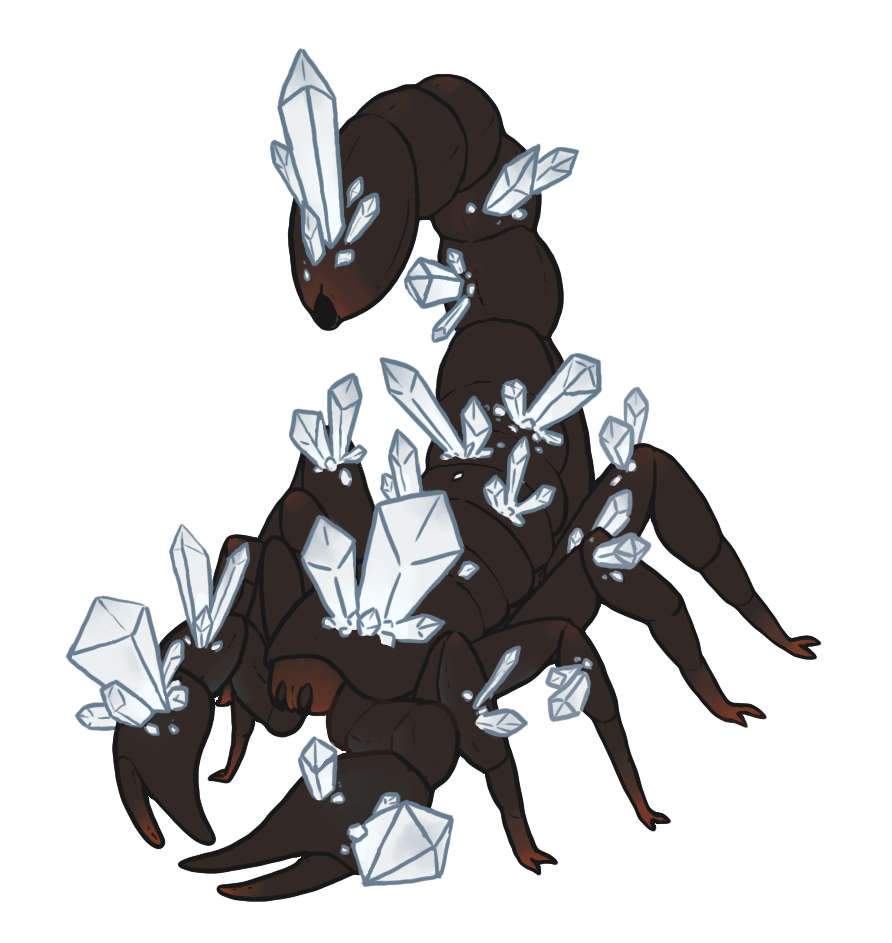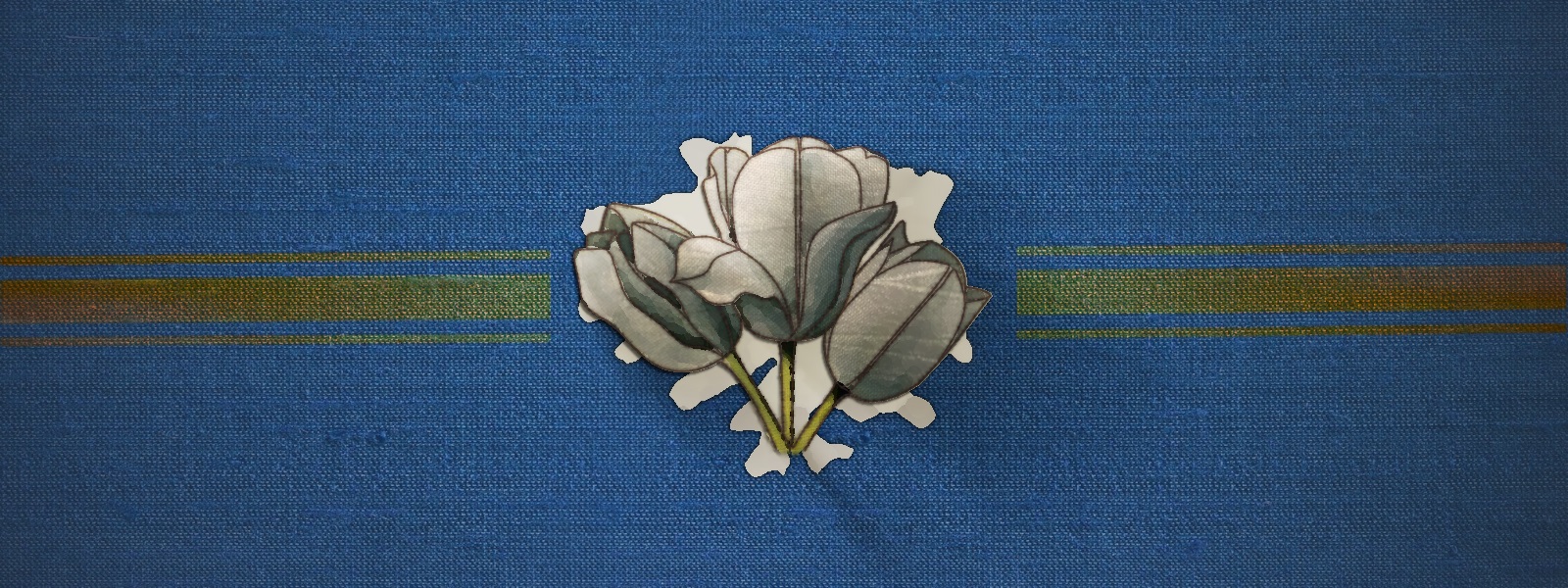Lorianortis
"What's behind this red line on the map? I heard it's quite bad." The géroun raised his head and approached the woman, glancing at the paper she held. "It's the land of the Lorianortis and the white fire," he said. "Both can fry you alive if you aren't careful. Make sure you get the new map with the new line each year and stay behind it. You'll be fine."Lorianortis, diminutive of Lorianosos fe ortis, Fire eaters is the name given to one of the largest Menicean animal species. Their name comes from their ability to eat the white fire that erupts in the south of the desert and spill it back by their tail. They are giant scorpions that live in the south of the Eastern Desert . Fierce and dangerous, they forced the crown to create an army corps solely dedicated to their hunt.
Basic Information
Anatomy
Deep in the southern part of the desert, Lorianortis can measure up to 15 meters high and 20 meters long. Luckily, those that the Fireguard has to fight are younger individuals that lost a fight for territory. These ones are never taller than 2 meters high and 1 long.
Skin
Lorianortis skin is similar to regular scorpions'. They are protected by a black and sturdy cuticle on all their body. Soldiers usually aim at the joints between each part of the cuticle as they tend to be weaker than the rest of the body. Each individual has a unique white glass crystal pattern on his body. This is due to the species' need to absorb white fire; The sand on their body turns to glass when the scorpion gets close to the light, forming beautiful white gems. Thus, Lorianortis moults are highly expensive among connoisseurs. The richest often hire mercenaries to scout the south of the desert and bring back an abandoned moult. Glass crystals are then carefully removed from the skin and sculpted into decorations or gems.Stinger
Lorianortis do not have a proper stinger. Instead, they have a small opening that can propel the white fire they ate before. Because of that, most people believe that the scorpions were a divine punishment to an old clan that once ruled the desert during the Clan War. Some of them also think that the Lorianortis are responsible for the desertification of the area. They only use their fire to defend themselves but never to hunt as they prefer raw meat.Clamps
Armed with a pair of giant clamps, the scorpions use them to hunt, kill and grab their preys. The clamps are also used to keep large or agile threats at a safe distance so they can be sprayed with fire.Legs
Mostly living on rocky walls, nature gave Loriantis six strong legs they use to climb cliffs. The scorpions are able to stay in a vertical position for days, usually waiting for a white fire eruption to eat.Genetics and Reproduction
Lorianortis reproduce once to twice a year. Most of the eldest individuals living are females, as males tend to be eaten by their bride after the intercourse is done.
When a pair find each other, they engage in a small courtship ritual that mostly consists of the two scorpions holding their partner with their clamps and moving around for a while.
Growth Rate & Stages
The species' gestation period can be quite long. Females are usually pregnant for 7 to 10 months before giving birth to up to 5 babies.
The newborns will travel on their mother's back for the first year of their lives. She will protect them from external threats until they grow their own cuticle and become able to defend themselves. They become able to consume white fire at the same time, and will often try their spray while on their mother's back. This is part of the reason why the species has a high infantile death rate, alongside the territorial fights.
As soon as they left their mother, they will try to find a piece of territory of their own and will try to expand it as they grow up.
Ecology and Habitats
Lorianortis are only found in the south of the Eastern Desert. All of them were hunted from the north in the early years of the Golden Age.
Each scorpion owns a piece of territory they will actively try to grow. The best spots are above the death valleys, as they can quickly consume the white fire that erupts at the bottom. These locations are mostly owned by the largest specimens alive and are usually only disputed when one of the dies.
Additional Information
Perception and Sensory Capabilities
Two black eyes on the top of their mouth give the Lorianortis a 270° view at all times. They use their eyes to spot large preys or menaces, everything moving or far away.
When moving, the species use hair it has on its clamps and its legs to find safe spots where to step. By doing so, they avoid slippery or fragile rocks that would not be able to support their weight.
Cultural impact
The desert scorpions are one of the two reasons that pushed the crown to form the Fireguard. Everyone in the desert knows about them and plan their travels according to the latest reports of the species' activity. In fact, when two Lorianortis fight for territory, the loser, if alive, has to go away. Since the south is already densely populated, lots of them try to go north. It is then up to the Fireguard to intercept the animal before it reaches any village or road and to kill it. They also inspired many songs and stories heard in taverns all over the land, like many wild and dangerous animals.
Lorianortis by Graphi
Scientific Name
Scorpiones grandis
Lifespan
35-50 years
Average Height
From 2 to 15 meters
Average Length
From 1.5 meters to 20 meters
Geographic distribution
South of the Eastern Desert only.




Since they don't use their fire on prey, I imagine a good way of hunting these being to look like prey so they get close enough to attack, or to put out some fake prey that can hurt them! These are horrifying! I don't like them! Giant buggish things scare me! This is great as a result, well done.
The Fireguard just does not hunt the largest ones and are very happy with them staying in the valleys in the south lol. Stealth is usually the way to go with agile soldiers. Thanks for the kind words :]